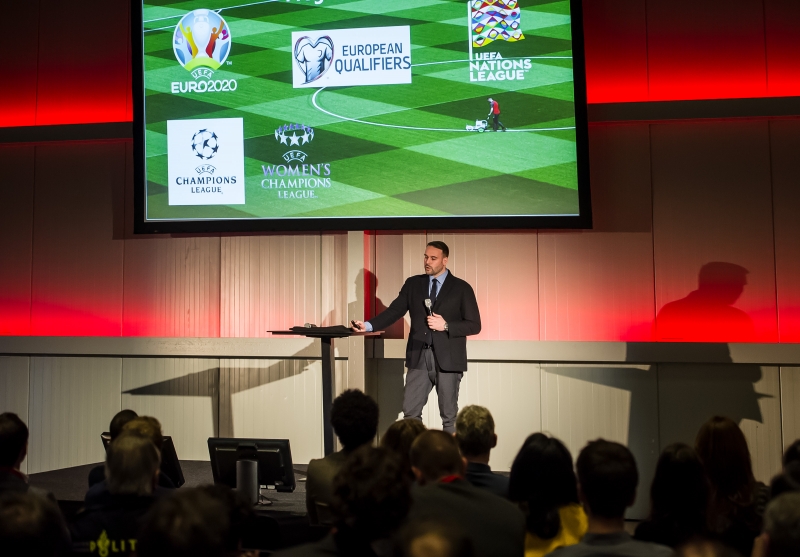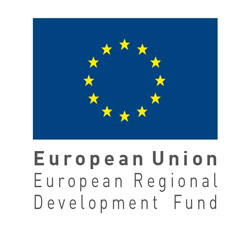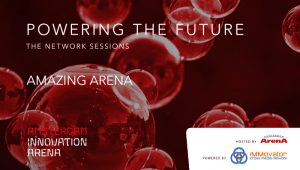How does the ArenA innovate?
Read the Dutch version here, Lees de Nederlandse versie hier.
On February 8th there was a special event with the theme Amazing Arena. The Amsterdam ArenA and various partners share how they innovate the core services of the ArenA. The meeting was the third edition of Powering the Future – The Network Sessions, an cooperation of iMMovator and Amsterdam Innovation Arena.
Knowledge from the attendees about the Amsterdam ArenA was tested. Sqiffer ensured that the whole audience was involved. Do you know the answer to the following questions…. In which year was the Amsterdam ArenA opened? How many seats are there in the stadium? And which club, next to Ajax, also played their home matches in the ArenA? Here you can read the answers.
During this Powering the Future-session, special attention was given to innovation in three areas: energy transition and storage, the perfect playing field and stadium format show tools such as lights.
The Mobility House: Energy transition and energy storage
In 2016, the Amsterdam ArenA signed a ten-year contract with Nissan, Eaton and The Mobility House. This states that they provide the ArenA with an energy storage system for efficient, sustainable and reliable energy management. BAM has now joined this project.
According to Marcus Fendt (The Mobility House), we now all know that energy production needs to be more sustainable. We need to move from fossil fuels to fully renewable energy sources, such as solar energy. The stadium currently has 4,200 solar panels on the roof and supplies its remaining electricity needs with Dutch wind energy. The so-called xStorage Buildings system efficiently stores and distributes energy when it’s needed. Using 280 Nissan LEAF batteries, it is the largest storage system of used batteries in Europe for commercial companies, with a capacity of 4 megaWatt.
The Mobility House provides energy services that make the local electricity grid more stable by smoothing the peaks and downs of both energy consumption and sustainable energy production. While generating additional value for the Amsterdam ArenA.

UEFA: UEFA’s view on pitch quality
The European Football Championship 2020 will be held in the summer of 2020 in twelve different countries. UEFA ensures that all venues and clubs maintain the high standards required to host European football, each stadium must meet UEFA’s requirements. For example, a playing field must always be safe for the players. The wish of each player is a flat and playable field, then there are several options such as a natural grass field or artificial turf. Lee Guerriero (UEFA) claims that most stadiums choose for hybrid fields, a combination of natural grass and artificial turf. Since these playing fields offer the playing qualities of natural grass with the playing guarantee of artificial turf.
Lee explains that UEFA offers several tools to help stadiums. The guidelines will be published in February 2018, which contains all the considerations relating to the quality of the playing field. UEFA also has several Pitch Suport Programmes in which they provide support to stadiums.

Amsterdam ArenA: ArenA’s perfect pitch
The grass has top priority for the ArenA. In short, the turf must always be in perfect condition. A system continuously monitors the turf via advanced sensors and infrared at a micro level. This enables the ArenA to know exactly what is happening in the subsoil and inside the grass plants. Next, the enormous flow of data flows into a dashboard. On the basis of this information it can be decided, for example, to open or close the roof and whether additional nutrients and water are needed. According to Henk van Raan (Amsterdam ArenA), this is of great value because it makes the grass more efficient and sustainable. Costs are saved and the quality of the grass can be pulled to the highest level.

Stadium sized entertainment technology: demo
The Amsterdam ArenA is the first stadium in the world to incorporate movable color LED spotlights with the Philips ArenaVision system. This innovative lighting system supports high definition, super slow-motion replays. Also, the flexible lighting makes it possible to illuminate specific parts of the pitch during events or before a football match as part of a light show.
- Amsterdam ArenA is the largest stadium in the Netherlands with 54,033 seats.
- The ArenA was officially opened on 14 August 1996 by Queen Beatrix with a grand opening ceremony.
- Since 14 August 1996 the ArenA has been the home base of Ajax. The American footballers of Amsterdam Admirals also played their home matches there.
During the session photos were taken by Goos van der Veen. View the pictures here.
This event is co-financed by the surcharge for the Top consortia for Knowledge and Innovation (TKIs) of the Ministry of Economic Affairs and a contribution from the European Regional Development Fund (ERDF) under the SAX innovation programme.

Gekoppeld event
 8 februari 2018
Amazing Arena: innovatie in de ArenA
8 februari 2018
Amazing Arena: innovatie in de ArenA